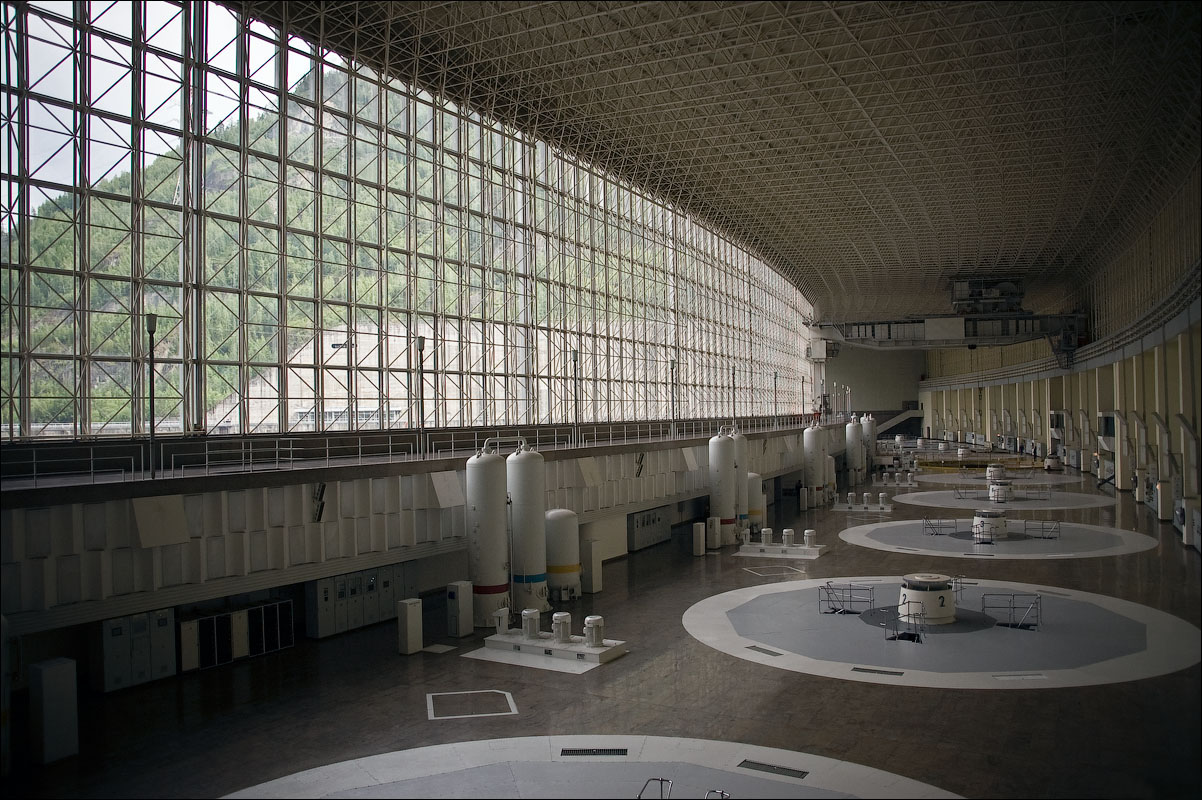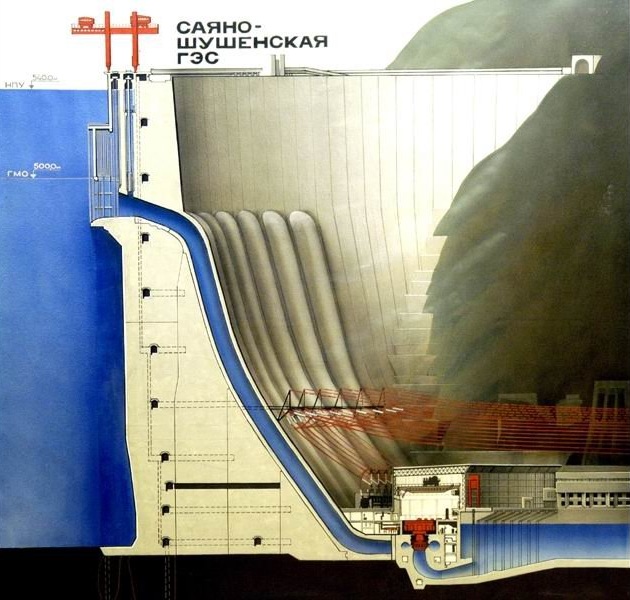|
Shushensky Bor National Park
Shushensky Bor National Park () ("Sushenshky Forest") consists of two representative forests in the extreme southwest of Siberia, in the northern foothills of the Western Sayan Mountains. The northern section is forest-steppe in character, while the southern section is mountain conifer forest. The southern section is bordered on two sides by the Yenisei river reservoir behind the Sayano-Shushenskaya Dam, the largest hydroelectric dam in Russia. The forest has both high biodiversity value and recreational value for hikers and tourists. It is located in the Shushensky District of Krasnoyarsk Krai. Topography The forest is divided into two parts: a small section ("Preovsky") located on relatively flat forest-steppe land (the "Minusink basin") 60 km north of the ridge of the West Sayan Mountains, and a much larger "Mountain section" on the north slope of the Western Sayan range. The forest displays the transition between two climatic zones - forest-steppe and taiga, as well a ... [...More Info...] [...Related Items...] OR: [Wikipedia] [Google] [Baidu] |
Krasnoyarsk Krai
Krasnoyarsk Krai ( rus, Красноя́рский край, r=Krasnoyarskiy kray, p=krəsnɐˈjarskʲɪj ˈkraj) is a federal subject of Russia (a krai), with its administrative center in the city of Krasnoyarsk, the third-largest city in Siberia (after Novosibirsk and Omsk). Comprising half of the Siberian Federal District, Krasnoyarsk Krai is the largest krai in the Russian Federation, the second largest federal subject (after neighboring Sakha) and the third largest subnational governing body by area in the world, after Sakha and the Australian state of Western Australia. The krai covers an area of , which is nearly one quarter the size of the entire country of Canada (the next-largest country in the world after Russia), constituting roughly 13% of the Russian Federation's total area and containing a population of 2,828,187 (more than a third of them in the city of Krasnoyarsk), or just under 2% of its population, per the 2010 Census. Geography The krai lies in ... [...More Info...] [...Related Items...] OR: [Wikipedia] [Google] [Baidu] |
Shushenskoye
Shushenskoye ( rus, Шу́шенское, p=ˈʂuʂɨnskəjɛ) is an urban locality (an urban-type settlement) and the administrative center of Shushensky District of Krasnoyarsk Krai, Russia, located at the confluence of the Yenisei and Big Shush rivers. Population: History and culture Vladimir Lenin was in internal exile here from 1897 to 1900. In 1970, a museum dedicated to his time in Siberia was opened which became a prominent and popular local site. Russian and international visitors go there to see the history of Lenin's stay as well as to see the peasant way of life during the 19th century. The area is also known for its nature reserves. During 2003 and 2004, an ethnic music festival called the Sayan Ring () was started in Shushenskoye, which draws visitors from Russia and other countries. Different ethno-music styles are played during its 3–4 day duration. Climate The climate is very warm in summer: local people cultivate melons and watermelon Watermelon ... [...More Info...] [...Related Items...] OR: [Wikipedia] [Google] [Baidu] |
Sayan Mountains
The Sayan Mountains (russian: Саяны ''Sajany''; mn, Соёны нуруу, ''Soyonï nurû''; otk, 𐰚𐰇𐰏𐰢𐰤, Kögmen) are a mountain range in southern Siberia, Russia ( Buryatia, Irkutsk Oblast, Krasnoyarsk Krai, Tuva Republic and Khakassia) and northern Mongolia. In the past, it served as the border between Mongolia and Russia. The Sayan Mountains' towering peaks and cool lakes southwest of Tuva give rise to the tributaries that merge to become one of Siberia's major rivers, the Yenisei River, which flows north over 3,400 kilometres (2000 mi) to the Arctic Ocean. This is a protected and isolated area, having been kept closed by the Soviet Union since 1944. Geography Western Sayan At 92°E the Western Sayan system is pierced by the Ulug-Khem (russian: Улуг-Хем) or Upper Yenisei River, and at 106°, at its eastern extremity, it terminates above the depression of the Selenga-Orkhon Valley Orkhon Valley Cultural Landscape (; mn, Орхоны ... [...More Info...] [...Related Items...] OR: [Wikipedia] [Google] [Baidu] |
Sayano-Shushenskaya Dam
The Sayano-Shushenskaya Dam (russian: Сая́но-Шу́шенская гидроэлектроста́нция, ''Sayano-Shushenskaya Hydroelektrostantsiya'') is located on the Yenisei River, near Sayanogorsk in Khakassia, Russia. It is the largest power plant in Russia and the 9th-largest hydroelectric plant in the world, by average power generation. The full legal name of the power plant, ''OJSC pen Joint-Stock SocietyP. S. Neporozhny Sayano-Shushenskaya HPP ydro power plant', refers to the Soviet-time Minister of Energy and Electrification Pyotr Neporozhny. the head of the power plant was Valery Kyari. Description The plant is operated by RusHydro. As of 2009, it was the largest power plant in Russia and the world's sixth-largest hydroelectric plant by average power generation. It provides more than a quarter of RusHydro's generation capacity. The plant operated ten type РО-230/833-0-677 hydro turbines manufactured at the Leningradsky Metallichesky Zavod, e ... [...More Info...] [...Related Items...] OR: [Wikipedia] [Google] [Baidu] |
Shushensky District
Shushensky District (russian: Шу́шенский райо́н) is an administrativeLaw #10-4765 and municipalLaw #13-2866 district (raion), one of the forty-three in Krasnoyarsk Krai, Russia. It is located in the south of the krai and borders with Minusinsky District in the north, Karatuzsky District in the northeast, Yermakovsky District in the east and southeast, the Tuva Republic in the southwest, and with the Republic of Khakassia in the west. The area of the district is .Official website of Krasnoyarsk KraiInformation about Shushensky District Its administrative center is the urban locality (an urban-type settlement) of Shushenskoye Shushenskoye ( rus, Шу́шенское, p=ˈʂuʂɨnskəjɛ) is an urban locality (an urban-type settlement) and the administrative center of Shushensky District of Krasnoyarsk Krai, Russia, located at the confluence of the Yenisei and Big .... Population: 36,891 ( 2002 Census); The population of Shushenskoye accounts for 52.7% of ... [...More Info...] [...Related Items...] OR: [Wikipedia] [Google] [Baidu] |
Shushensky Forest NP, Mountain Section , an urban-type settlement in Krasnoyarsk Krai, Russia
{{Geodis ...
Shushensky (masculine), Shushenskaya (feminine), or Shushenskoye (neuter) may refer to: *Shushensky District, a district of Krasnoyarsk Krai, Russia *Shushenskoye Shushenskoye ( rus, Шу́шенское, p=ˈʂuʂɨnskəjɛ) is an urban locality (an urban-type settlement) and the administrative center of Shushensky District of Krasnoyarsk Krai, Russia, located at the confluence of the Yenisei and Big ... [...More Info...] [...Related Items...] OR: [Wikipedia] [Google] [Baidu] |
Sayano-Shushenskoye Reservoir
The Sayano-Shushenskaya Dam (russian: Сая́но-Шу́шенская гидроэлектроста́нция, ''Sayano-Shushenskaya Hydroelektrostantsiya'') is located on the Yenisei River, near Sayanogorsk in Khakassia, Russia. It is the largest power plant in Russia and the 9th-largest hydroelectric plant in the world, by average power generation. The full legal name of the power plant, ''OJSC pen Joint-Stock SocietyP. S. Neporozhny Sayano-Shushenskaya HPP ydro power plant', refers to the Soviet-time Minister of Energy and Electrification Pyotr Neporozhny. the head of the power plant was Valery Kyari. Description The plant is operated by RusHydro. As of 2009, it was the largest power plant in Russia and the world's sixth-largest hydroelectric plant by average power generation. It provides more than a quarter of RusHydro's generation capacity. The plant operated ten type РО-230/833-0-677 hydro turbines manufactured at the Leningradsky Metallichesky Zavod, eac ... [...More Info...] [...Related Items...] OR: [Wikipedia] [Google] [Baidu] |
Sayan Montane Conifer Forests
The Sayan montane conifer forests ecoregion (WWF ID: PA0519) covers the mid-elevation levels of the Sayan Mountains, the high mountain range between the taiga of Siberia, Russia to the north, and the steppes of Mongolia to the south. The slopes of the mountains at the mid-altitudes are covered by Temperate coniferous forest. The ecoregion is in the Palearctic realm, with a cold semi-arid climate. It covers . Location and description The ecoregion stretches some 2,500 km from the Kuznetsk Alatau mountains in the west, across the western and eastern Sayan Mountain ranges, to the southeastern shores of Lake Baikal. The ecoregion covers the forested mid-altitudes of the mountains, with a lower bound ranging from 600 to 900 meters about sea level (depending on local conditions), and an upper bound of 1,800 meters. This ecoregion is one of high biodiversity, due to its position on the meeting lines of climate and floral zones, and the many micro-climates created by the mountainous ... [...More Info...] [...Related Items...] OR: [Wikipedia] [Google] [Baidu] |
Humid Continental Climate
A humid continental climate is a climatic region defined by Russo-German climatologist Wladimir Köppen in 1900, typified by four distinct seasons and large seasonal temperature differences, with warm to hot (and often humid) summers and freezing cold (sometimes severely cold in the northern areas) winters. Precipitation is usually distributed throughout the year but often do have dry seasons. The definition of this climate regarding temperature is as follows: the mean temperature of the coldest month must be below or depending on the isotherm, and there must be at least four months whose mean temperatures are at or above . In addition, the location in question must not be semi-arid or arid. The cooler ''Dfb'', ''Dwb'', and ''Dsb'' subtypes are also known as hemiboreal climates. Humid continental climates are generally found between latitudes 30° N and 60° N, within the central and northeastern portions of North America, Europe, and Asia. They are rare and i ... [...More Info...] [...Related Items...] OR: [Wikipedia] [Google] [Baidu] |
Köppen Climate Classification
The Köppen climate classification is one of the most widely used climate classification systems. It was first published by German-Russian climatologist Wladimir Köppen (1846–1940) in 1884, with several later modifications by Köppen, notably in 1918 and 1936. Later, the climatologist Rudolf Geiger (1894–1981) introduced some changes to the classification system, which is thus sometimes called the Köppen–Geiger climate classification system. The Köppen climate classification divides climates into five main climate groups, with each group being divided based on seasonal precipitation and temperature patterns. The five main groups are ''A'' (tropical), ''B'' (arid), ''C'' (temperate), ''D'' (continental), and ''E'' (polar). Each group and subgroup is represented by a letter. All climates are assigned a main group (the first letter). All climates except for those in the ''E'' group are assigned a seasonal precipitation subgroup (the second letter). For example, ''Af'' i ... [...More Info...] [...Related Items...] OR: [Wikipedia] [Google] [Baidu] |
Protected Areas Of Russia
Protected areas of Russia, (official Russian title: russian: Особо охраняемые природные территории, literally "Specially Protected Natural Areas"), is governed by the corresponding 1995 law of the Russian Federation. Categories The law establishes the following categories of protected areas: # State nature zapovedniks, including Biosphere reserves (''biosphere zapovedniks'') # National Parks # Nature parks # State nature zakazniks # Natural Monuments # Dendrological parks and botanical gardens # Health recuperation areas and health resorts Other areas Other areas that are protected in Russia include: * UNESCO World Heritage Sites. * city and regional parks. * Ramsar sites — ''wetlands of international significance''. * Russian Cultural heritage monuments. * Historic buildings and gardens — ''e.g.: Imperial Russian palaces and their landscape parks''. Total Land Area On May 21, 2019, the '' Moscow Times'' cited a World Wildlife Fund report ... [...More Info...] [...Related Items...] OR: [Wikipedia] [Google] [Baidu] |
2009 Sayano-Shushenskaya Power Station Accident
On 17 August 2009, a turbine at the hydroelectric power station of the Sayano-Shushenskaya Dam near Sayanogorsk in Russia failed catastrophically, flooding the turbine hall and killing 75 people. A section of the roof of the turbine hall collapsed; all but one of the ten turbines were damaged or destroyed. The entire plant output, totalling 6,400 megawatts (MW) – a significant portion of the supply to the local area – was lost, leading to widespread power outages. An official report on the accident was released in October 2009. Background The Sayano-Shushenskaya Dam is located on the Yenisey River in south-central Siberia, Russia, about south of Sayanogorsk, Khakassia. Before the accident, it was the largest hydroelectric power station in Russia and the sixth-largest in the world by average power generation. On 2 July 2009, RusHydro, the power station's operator, announced the station's all-time highest electricity output in 24 hours. Turbine 2 Turbines of the type ... [...More Info...] [...Related Items...] OR: [Wikipedia] [Google] [Baidu] |


.jpg)




